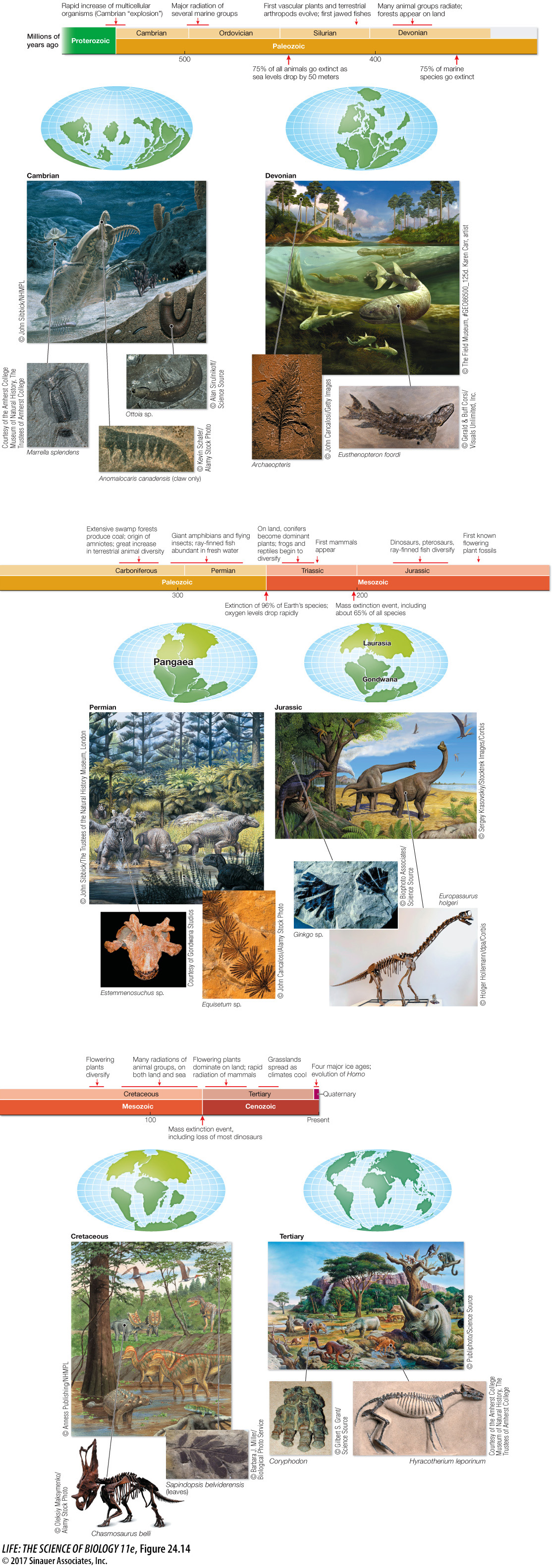Life expanded rapidly during the Cambrian period
The Cambrian period (542–488 mya) marks the beginning of the Paleozoic, the first era of the Phanerozoic. The O2 concentration in the Cambrian atmosphere was approaching its current level, and the glaciations of the late Proterozoic had ended nearly 40 million years earlier. A geologically rapid diversification of life took place that is often called the Cambrian explosion. This name is somewhat misleading, as the series of radiations it refers to actually began before the start of the Cambrian and continued for about 60 million years into the early Cambrian (see Figure 24.12). Nonetheless, 60 million years represents a relatively short amount of time, especially considering that the first eukaryotes had appeared about a billion (= 1,000 million) years earlier. Many of the major animal groups represented by species alive today first appeared during these evolutionary radiations. Figure 24.14 provides an overview of the numerous continental and biotic innovations that have characterized the Phanerozoic.

Figure 24.14 A Brief History of Multicellular Life on Earth The geologically rapid “explosion” of life shortly before and during the Cambrian saw the rise of many major animal groups that have representatives surviving today. The following three pages depict life’s history through the Phanerozoic. The movements of the major continents during the past half-billion years are shown in the maps of Earth, and associated biotas for each time period are depicted. The artists’ reconstructions are based on fossils such as those shown in the photographs.
For the most part, fossils tell us only about the hard parts of organisms, but in some well-studied Cambrian fossil beds the soft parts of many animals were preserved. Multicellular life was largely or completely aquatic during the Cambrian. If there was life on land at this time, it was probably restricted to microorganisms.

